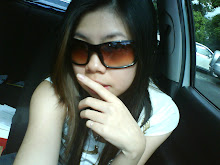Yeapy..."clap clap" today is my last day working since 31st of July. An overoll of 11days working quite tired, not about the time on work itself but the time spending for taking train, bus or cab to be there and home. It is at least 2 hours before wow...terrific right but that's KL. Anyway.. mission done yeapy.. BTW.. can anyone believe that how blur i am..now i totally agreed to my previous lady boss that i'm really a mong cha cha. I've been working at the same shopping mall for an 11 days but no matter i take public transport, someone give me a free ride or i drive myself.. none of the days i never went lost either the wrong entrance, wrong car park lots or the wrong direction. OMG i really hate myself for being so blur really teruk, teruk, teruk.. :(
However, lets talk about what is "Makeup". "Makeup" is really a miracle effect in the world no matter on ladies or men. Check it out..
"Makeup" is cosmetics applied to the face to improve or change your appearance. It is also the combination of emotional, intellectual, and moral qualities that distinguishes an individual.
Encyclopedia of "Makeup"
In the performing arts, material used by actors for cosmetic purposes and to help create the characters they play. Not needed in Greek and Roman theatre because of the use of masks, makeup was used in the religious plays of medieval Europe, in which the angels' faces were painted red and those of God and Christ white or gold. In Elizabethan England, crude makeup methods included powdering the face with chalk (to play ghosts and murderers) or blackening it with burnt cork (to play Moors). As stage lighting improved in the 19th century, theatrical makeup became more artistic; stick greasepaint, invented by Ludwig Leichner in the 1860s, enabled actors to create more subtle characterizations. Stage makeup proved too heavy for motion pictures; in 1910 Max Factor created semiliquid greasepaint makeup suitable for early filmmaking, and in 1928 he created panchromatic makeup to keep pace with the development of incandescent lighting and more sensitive film. Makeup was later further modified for colour filmmaking and for television.








No comments:
Post a Comment